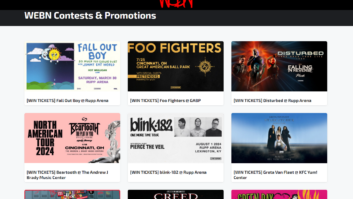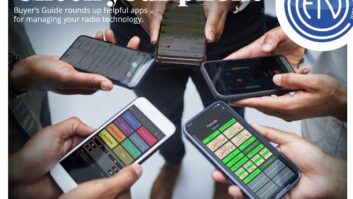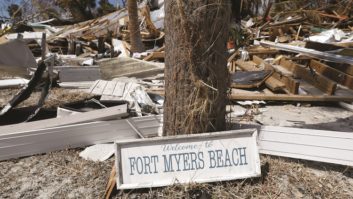Radio Broadcasters Can Learn a Lot From the Digital Television Transition
As U.S. radio broadcasters finally begin their digital transition, they can observe and benefit from the experience that U.S. television broadcasters have gained in their corresponding process, already in progress. Studying that other transition may help define a realistic timeline and projections for the road ahead for radio.
Yet the most striking conclusions may be how the two processes diverge. While there are numerous commonalities between the radio and TV transitions, there are at least as many important differences between them, as well.
Content vs. delivery
Both radio and TV broadcasters are building new delivery channels to deliver digital content to consumer receivers. The channel that U.S. DTV provides allows both traditional (“standard definition”) and new (“high definition”) types of television content to flow, including the transmission of multiple programs simultaneously on a single TV channel. This implies that the conversion process faced by U.S. television broadcasters includes both transmission and production equipment, and that stations’ infrastructure will require substantial change.
The situation is quite different in radio, where the digital content that HD Radio can deliver is already available and well-established at radio stations, and no multiplicity of audio sources is provided (in the current format, at least), so little production equipment or facility infrastructure changes will be required. While TV now has to upconvert a lot of analog content for its digital channels, radio has been downconverting digital audio to its analog channels for many years.
Although that’s good news for radio stations’ conversion costs and timelines, it’s important to note that this same (or better) digital content quality has for some time been available to consumers via packaged media and the Internet. HD Radio will simply bring radio services into essential parity with the rest of consumer audio.
This will be helpful for radio’s long-term prospects, but it will not create strong unique demand for HD Radio receivers, nor drive the sales of new audio systems to faithfully reproduce newly available content. The best methods of stimulating penetration for HD Radio receivers will simply come from bundling its reception capability into other digital audio equipment, such as car CD changers, boomboxes and home receivers.
Moreover, in order for the transition to HD Radio to have any impact at all, most broadcasters will have to adjust their philosophy on audio processing. If typical practices persist on music stations’ digital signals, it will obviate any discernible quality improvement provided by the new service.
Regulatory differences
It’s well known that the fundamental distinction between U.S. digital TV and radio involves their regulatory profiles. DTV involves broadcasters’ moving to new spectrum, and the eventual harvesting of the bandwidth previously used by analog TV stations. HD Radio’s IBOC approach leaves stations’ spectrum usage as is, resulting in a far smaller regulatory burden.
Because of this dissimilarity, TV stations are faced with a mandatory conversion timeline, while radio stations can choose whether or when to convert.
Another welcome difference for radio is that it has no downstream multichannel delivery services to cope with, as DTV is currently struggling with over carriage of its new services by cable and DBS providers. For radio, it’s strictly over-the-air (or on-line), with broadcasters maintaining complete control of their destiny.
Other parameters of the two transitions are compared in the table.
Similarities
One area in which the two transitions share similar goals is in their potential for generating new revenue streams for broadcasters via datacasting. While this promise may never be fulfilled to the level of current expectations, HD Radio will have the advantage of mobile delivery, which it may be able to successfully exploit. (The current state-of-the-art in U.S. DTV reception does not include mobile capabilities.)
Also shared is the need by both radio and TV broadcasters to aggressively promote the service and proactively influence consumer awareness of the new systems.
In addition, radio stations should expect some dire early interference reports, as DTV experienced. Although tests have shown that seriously problematic new interference is unlikely, stations should still be ready for it. It is hard to imagine that all the new RF energy pumped in the AM and FM bands when HD Radio is broadly adopted will not result in at least a few cases of upset listeners. As with DTV, it is likely that these can be solved on a case-by-case basis, and that the problem will soon fade away. Nevertheless, some negative press may result in the early going.
No pain, no gain
Bumpy transitions are no fun while they’re happening, but like a major road construction project, once it’s completed, the memory of the pain quickly subsides, and the improvement is enjoyed for a long time. Ultimately it’s the product, not how it got there, that’s appreciated.
This is what will eventually happen in U.S. DTV, where a troubled and expensive transition ultimately results in a successful and seemingly transparent system (also similar to the U.S. cellular telephone industry’s experience). The current question is just how long it will take to get there.
Meanwhile, for U.S. digital radio the transition may be easier than DTV’s, but its primary question is whether the product will even be acknowledged, let alone embraced by consumers. It is possible for a transition to be too smooth. If some bits fall in the digital forest and no one notices, is there any sound?
This chart compares some parameters of digital conversion for U.S. television and radio broadcasters.
Transition parameterDTVHD Radio
Initial release of specification
1999
2002
Sponsoring body
ATSC (open standard development org.)
Ibiquity (proprietary developer)
Delivery paths
Cable, DBS, OTA (UHF & VHF)
OTA (AM & FM), Internet
Perceived advantages
Major qualitative & quantitative growth
Minor to moderate qualitative growth (possibly some later quantitative growth)
Amount of “HD” content currently available for broadcast
>20%
100%
Typical conversion costs per station
>$1M
<$100k
Major threat to broadcasters
Digital content piracy
Failure of format (wasted conversion $)
Primary obstacle to conversion by consumers
Cost, fear of obsolescence, inadequate HD content to date
Inadequate value of new service
Regulatory environment
Mandatory conversion, return of analog spectrum by 2006
Voluntary conversion, no spectrum changes












